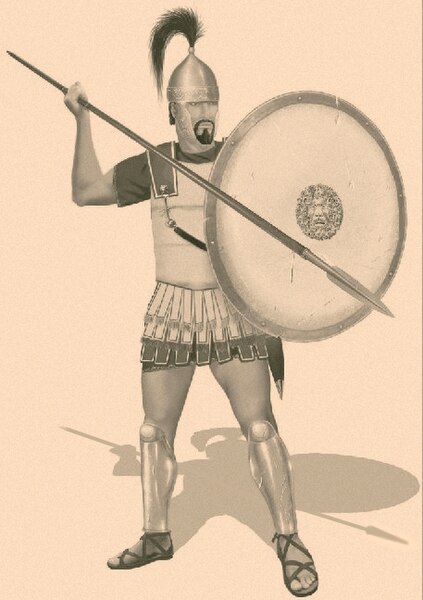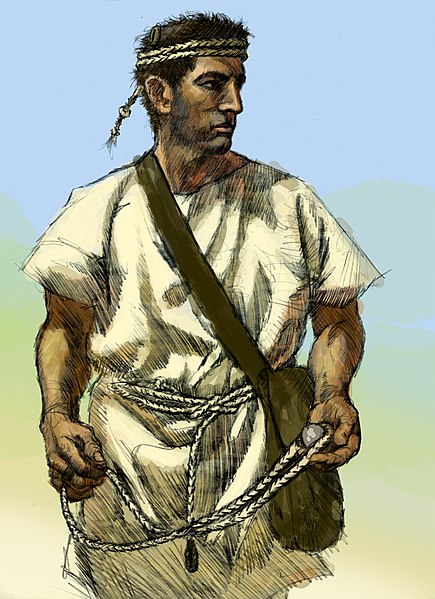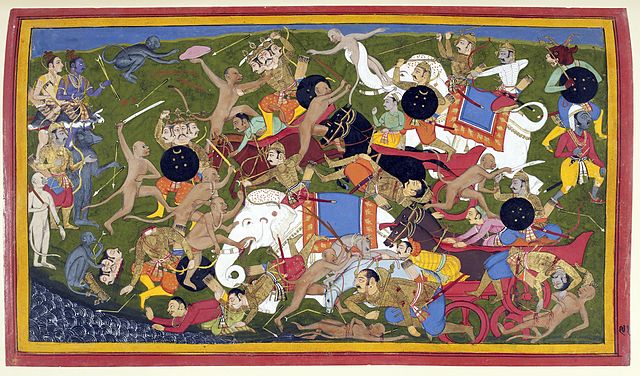The military of Carthage was one of the largest military forces in the ancient world. Although Carthage's navy was always its main military force, the army acquired a key role in the spread of Carthaginian power over the native peoples of northern Africa and southern Iberian Peninsula from the 6th century BC and the 3rd century BC. Carthage's military also allowed it to expand into Sardinia and the Balearic Islands. This expansion transformed the military from a body of citizen-soldiers into a multinational force composed of a combination of allies, citizens and foreign mercenary units.
A recreation of a Carthaginian military unit
Citizen soldiers of Carthage on parade, as envisaged by Georges Rochegrosse
Carthaginian hoplite (Sacred Band, end of the 4th century BC)
Balearic slingers.
A war elephant was an elephant that was trained and guided by humans for combat. The war elephant's main use was to charge the enemy, break their ranks, and instill terror and fear. Elephantry is a term for specific military units using elephant-mounted troops.
War elephants depicted in Hannibal crossing the Rhône (1878), by Henri Motte
Indian elephant sword on display at the Metropolitan Museum of Art, two feet (61 cm) long
Rajput painting depicting a war elephant in an army
A 17th-century depiction of the war of Lanka in the ancient Indian epic Ramayana, showing war elephants








